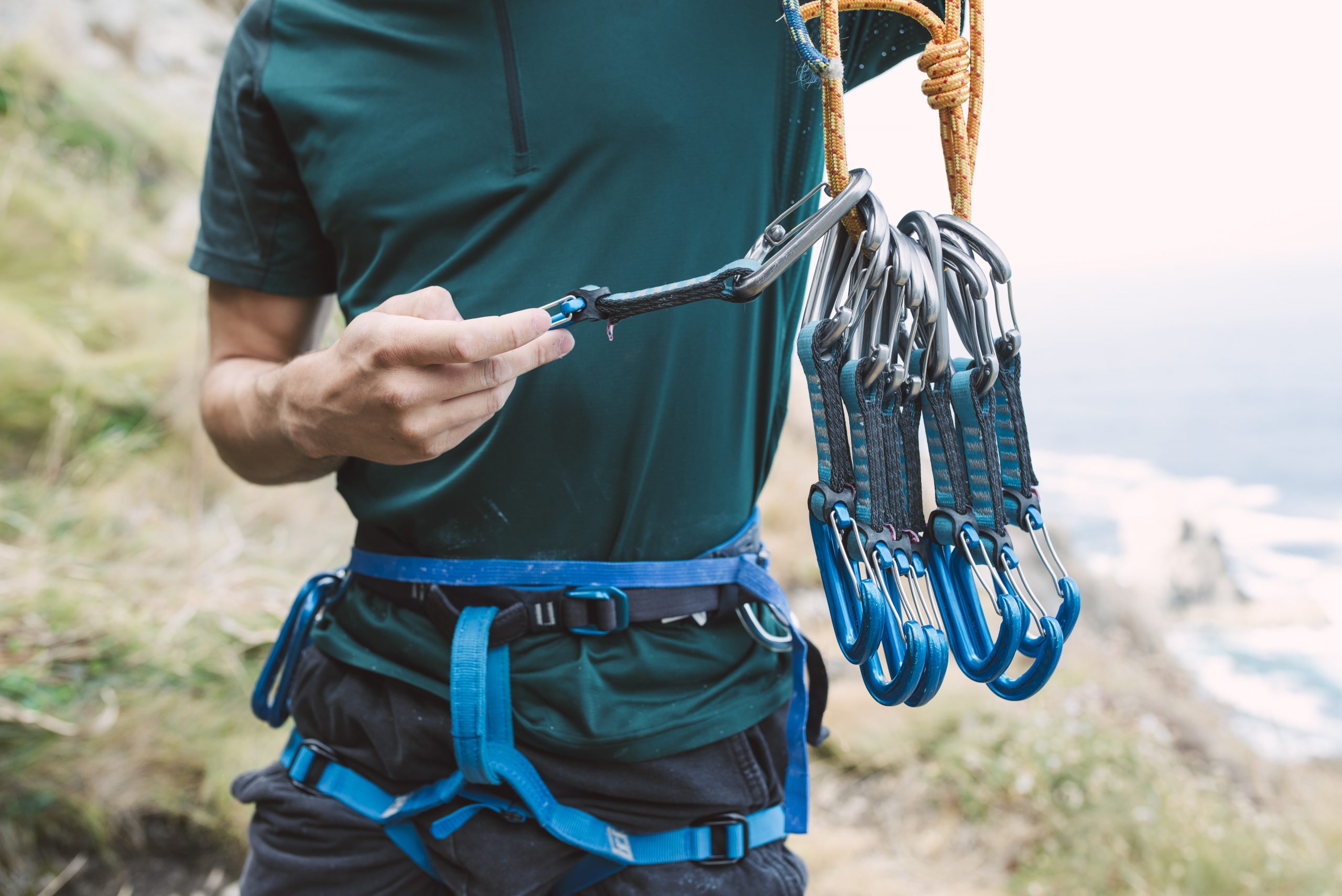Climbing Harness Weight Limit
Rock climbing is an exciting experience. Being safe while rock climbing is something you can’t neglect, and getting a climbing harness is a must.
Climbing harnesses are available in different variations, but they all perform the same job. Unlike tying a knot, a good harness protects you and ensures you are safe while rock climbing. As an overweight person, you may be wondering whether you can use a climbing harness.
Read on to find out how much weight a climbing harness can hold and if it’s possible to use a climbing harness if you’re overweight.
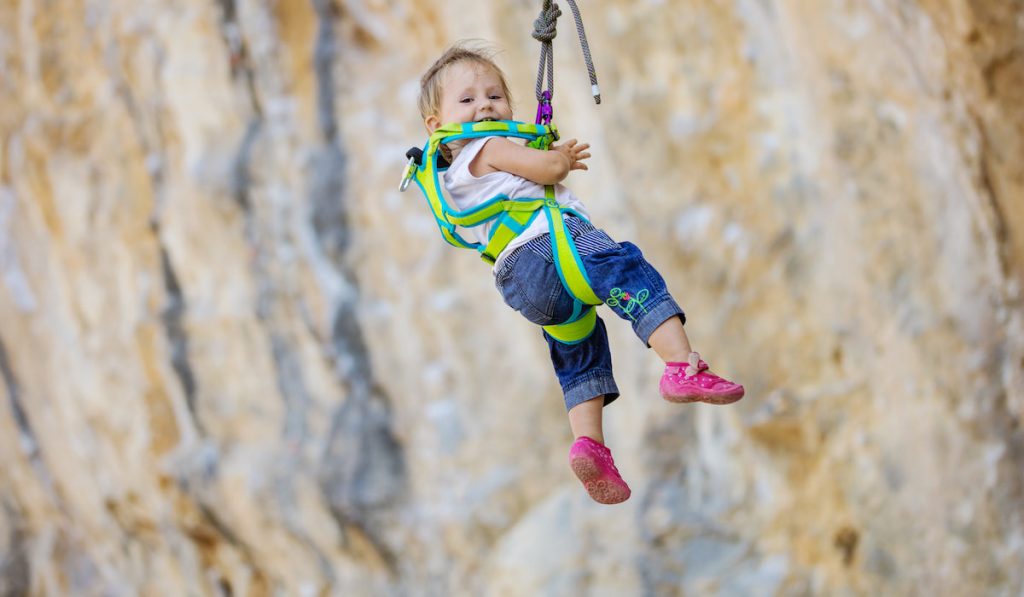
How Much Weight Can a Climbing Harness Hold?
kN stands for kilo Newtons, and it’s the rating shown on your climbing harness. 1kN is equal to 220lbs or 100kg.
A rock-climbing harness can hold a minimum of 10kN or -2200 lbs of force with the waist belt and 15kN or-3300 lbs of force to be certified by the UIAA.
Each fall exerts a force that’s greater than body weight. Sometimes it’s more than your actual weight. The actual force depends on the climber’s weight, the distance fallen, the length of the rope, and the friction generated through the gear in the system.
Additionally, the exact force will depend on how dynamic the rope and belay are.
It’s critical to note that the heavier you are, the more force is applied to the gear when you fall. That’s why experts recommend getting a thicker harness with low impact force ratings.
All climbing harnesses go through thorough testing to meet Union Internationale des Associations d’ Alpinisme (UIAA) standards. Being an independent testing organization helps to ensure that quality standards are met.
The UIAA tests the harness’s impact force or the force exerted on the anchors and the climber when the harness holds a dynamic fall. The tests also check a harness’s fall rating, which is the number of falls it can hold before it breaks.
Note that harnesses are rated for force instead of weight due to their use.
Harnesses are sturdy and can fit as long as the biggest size fits around your legs and waist.
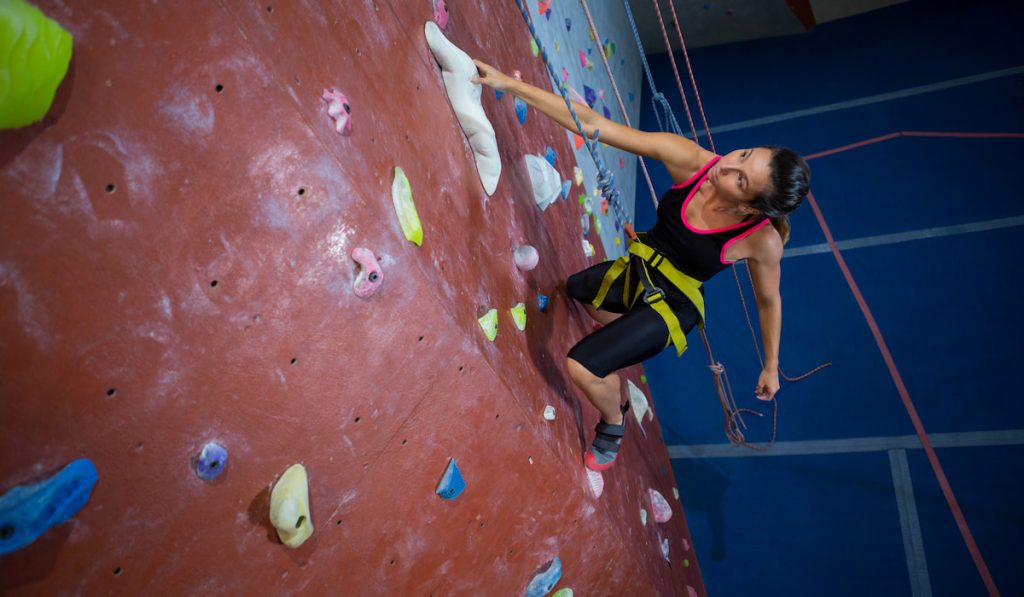
Are There Strength Requirements for Climbing Harnesses?
Yes, UIAA or CE are the two central bodies that certify gear for climbing. Any certified gear will have a CE or UIAA mark on it to show that they’ve gone through testing and they are safe for rock climbing.
Some requirements for UIAA certification include:
- The straps in contact with the body need to be more than 43mm wide
- Waist belts need to withstand a force of up to 10kN
- Belay loops need to withstand a force of up to 15kN
- The year of manufacture must be indicated on the harness
- 29mm max slippage is allowed at buckles under force
- The stitching or threads need to have a different color from the tape
While these are some of the minimum requirements, you’ll find some harnesses have more measures set in place to ensure your safety.
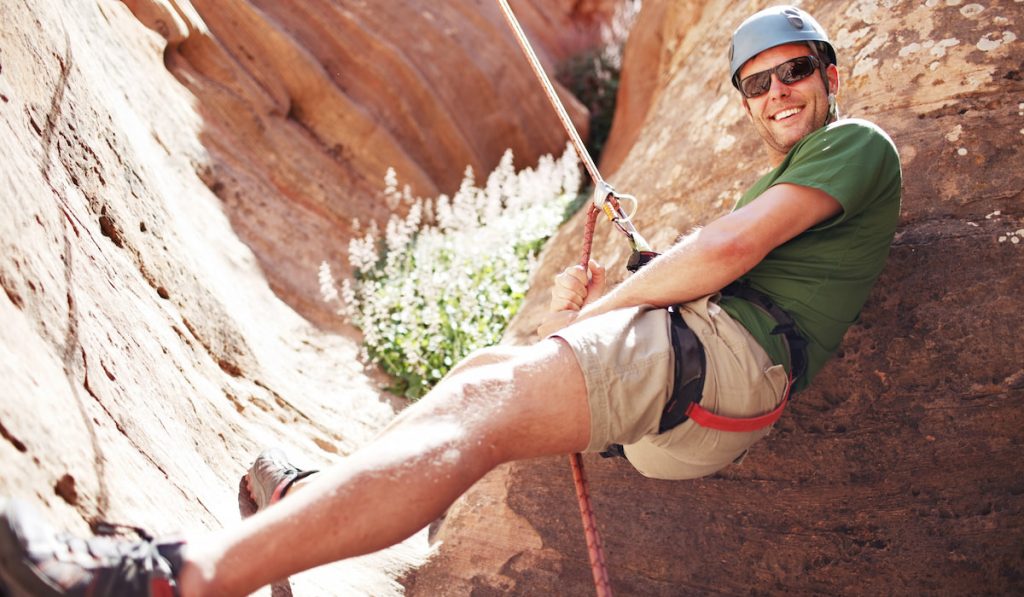
How Does Weight vs. Force Work With Climbing Harnesses?
Climbing gear, including harnesses, uses the equation mass x gravity=force.
The strength a harness requires to catch a falling person is 10 times the climber’s weight. That is because of the acceleration due to gravity. You’ll find that most climbing gear is rated above what a climber weighs or needs.
A quality harness should survive extreme conditions and still retain its integrity.
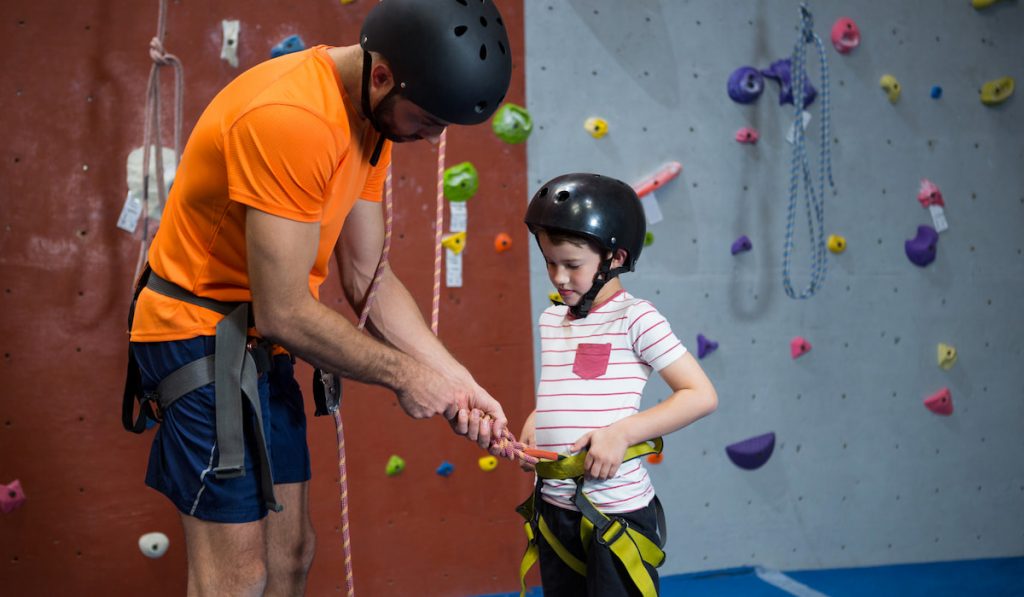
Does Age Play a Role in Climbing Gear?
Climbing gear is rated when new, which means the strength indicated is when a harness is new.
Climbing harnesses and slings wear out with time, and most have a shelf life of five years. However, certain factors like storage and the number of times used can lessen their durability.
It’s essential to check your harness regularly for any signs of wear.
Rock Climbing When You’re Overweight
Rock climbing when you’re overweight allows you to stay active, get rid of your fears, and enjoy the outdoors.
If you’re a beginner and wondering if you should dive into this outdoor sport, there are a few things to have in mind. Here are a few tips to help you get started.
Get Equipment That Can Support Your Weight
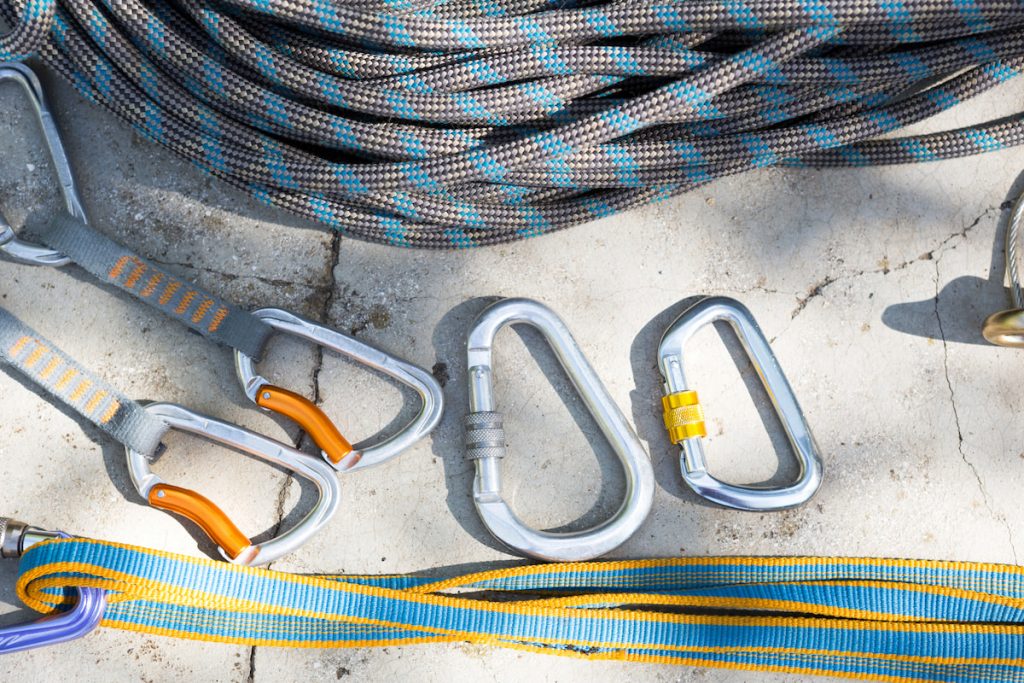
Being overweight comes with its risks. The gear you choose should support more than your body weight, as this also accounts for the force applied by gravity.
Note that you may find it challenging to get equipment that works for your size. Things like harnesses and helmets may be difficult to find if you are overweight, but some stores stock specialty equipment that allows you to enjoy rock climbing safely.
Go Easy
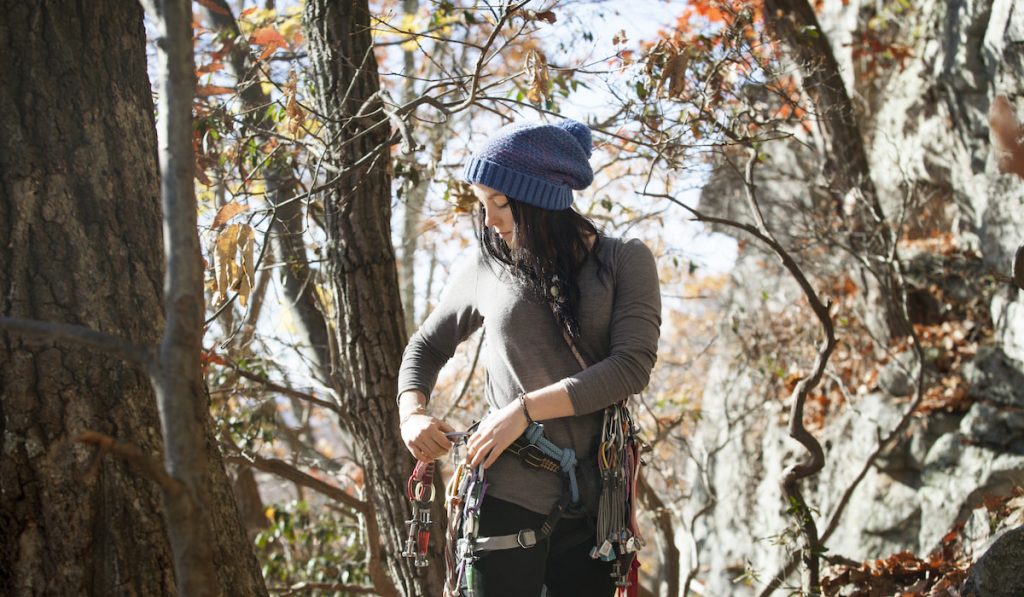
It’s tempting to try and push your body to get to a certain level. However, if you’re a beginner, it’s recommended to listen to your body and take things slow until your body is ready. You don’t want to end up tearing a muscle or suffering from an injury that will take months to recover from.
Get a Rock Climbing Partner That’s a Close Match

Your rock climbing partner should have experience working with someone of your size. Getting a wrong match could end up being disastrous and both of you might end up with injuries.
While you don’t have to get a partner who’s exactly your size, find a person within that range.
Join a Rock Climbing Group
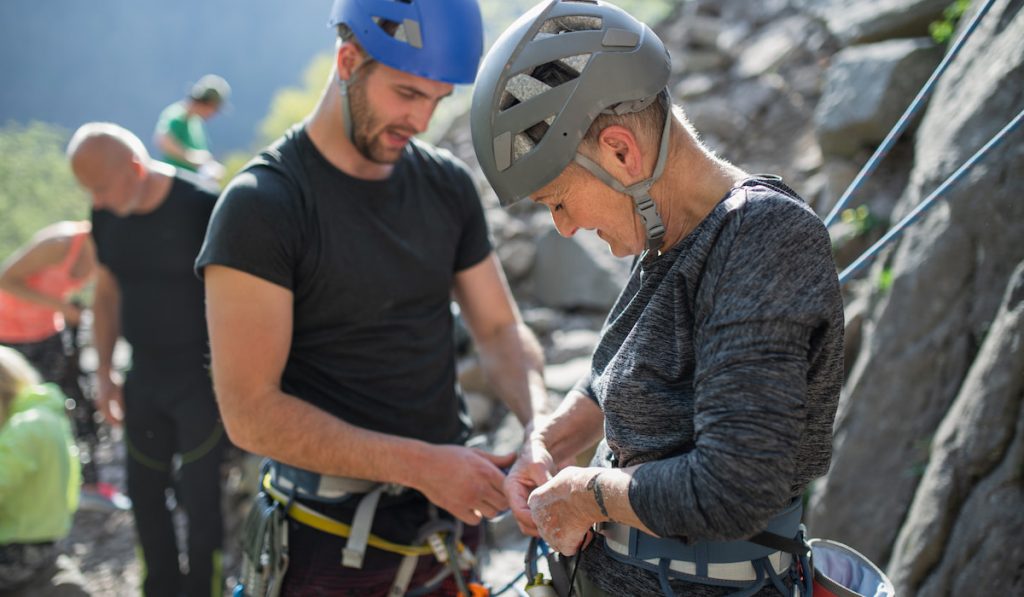
The best way to get started with rock climbing is to join a group. Most people are happy to show you around and give you tips on how to get started. You’ll also get to make friends and share your passion with like-minded people without being too conscious about your weight.
Final Thoughts
A climbing harness is essential to keep you safe when rock climbing. As an overweight person, you need to choose a harness that meets the set safety standards. The chances of a climbing harness failing to hold your weight are unlikely. Choose harnesses from reputable brands that undergo thorough testing to ensure they are safe.
Sources
- https://www.rei.com/learn/expert-advice/climbing-harness.html
- https://forbigandheavypeople.com/plus-size-climbing-harness/
- https://simplifiedsafety.com/blog/how-much-weight-can-my-safety-harness-support/
- https://outdoorinquirer.com/how-much-weight-can-climbing-rope-hold/
- https://www.dailyclimbing.com/how-much-weight-can-a-climbing-rope-hold/
